I live on an out of use golf course and have access to some decent fairways for flying. I want to get a few things built around 3 meters or so to fly there using a motor in the nose (Sorry!) to hand or dolly launch. I really enjoy aerotowing but with a plane of this type I can fly several times a week instead of once or so a month. I may be able to talk some local friends into the occasional tow with an electric tug as well.
I started a Nemere at 1:6 scale, 3.33m and a Duo Discus at 1:5 scale, 4m in another thread and then realized for my first attempt at most of these processes I'd be advised to stick to something more straightforward. No trailing ailerons, elliptical tail feathers, polyhedral breaks etc.
I've always liked the looks of the ASK 21 so I'm starting one at 1:5 scale, 3.4 meter span.
The wing cores are cut from pink/blue foam. You've seen cores before so no pictures yet.
Here is where I begin to solicit advice. Did I mention this is my first build using these techniques?
My current lay up schedule for the wings is 4 layers of 1.2oz cloth. 1st layer 20% span, 2nd layer 50%, 3rd layer 85%, 4th layer full span.
I hope to end up under 96oz ready to fly. At this weight will I need a spar beyond the wing joiner? Wing loading would be 14oz per square foot or less.
If I need a spar what do you recommend? I'll not be offended so if you have a "quick and dirty" (tow in a sanded slot, carbon tube, fishing rod blank?) as well as an "ultimate strength to weight solution", I'm open.
Should I change the lay up schedule for skinning the wings?
Here are some pictures of the fuselage starting with the profile.
I started a Nemere at 1:6 scale, 3.33m and a Duo Discus at 1:5 scale, 4m in another thread and then realized for my first attempt at most of these processes I'd be advised to stick to something more straightforward. No trailing ailerons, elliptical tail feathers, polyhedral breaks etc.
I've always liked the looks of the ASK 21 so I'm starting one at 1:5 scale, 3.4 meter span.
The wing cores are cut from pink/blue foam. You've seen cores before so no pictures yet.
Here is where I begin to solicit advice. Did I mention this is my first build using these techniques?
My current lay up schedule for the wings is 4 layers of 1.2oz cloth. 1st layer 20% span, 2nd layer 50%, 3rd layer 85%, 4th layer full span.
I hope to end up under 96oz ready to fly. At this weight will I need a spar beyond the wing joiner? Wing loading would be 14oz per square foot or less.
If I need a spar what do you recommend? I'll not be offended so if you have a "quick and dirty" (tow in a sanded slot, carbon tube, fishing rod blank?) as well as an "ultimate strength to weight solution", I'm open.
Should I change the lay up schedule for skinning the wings?
Here are some pictures of the fuselage starting with the profile.


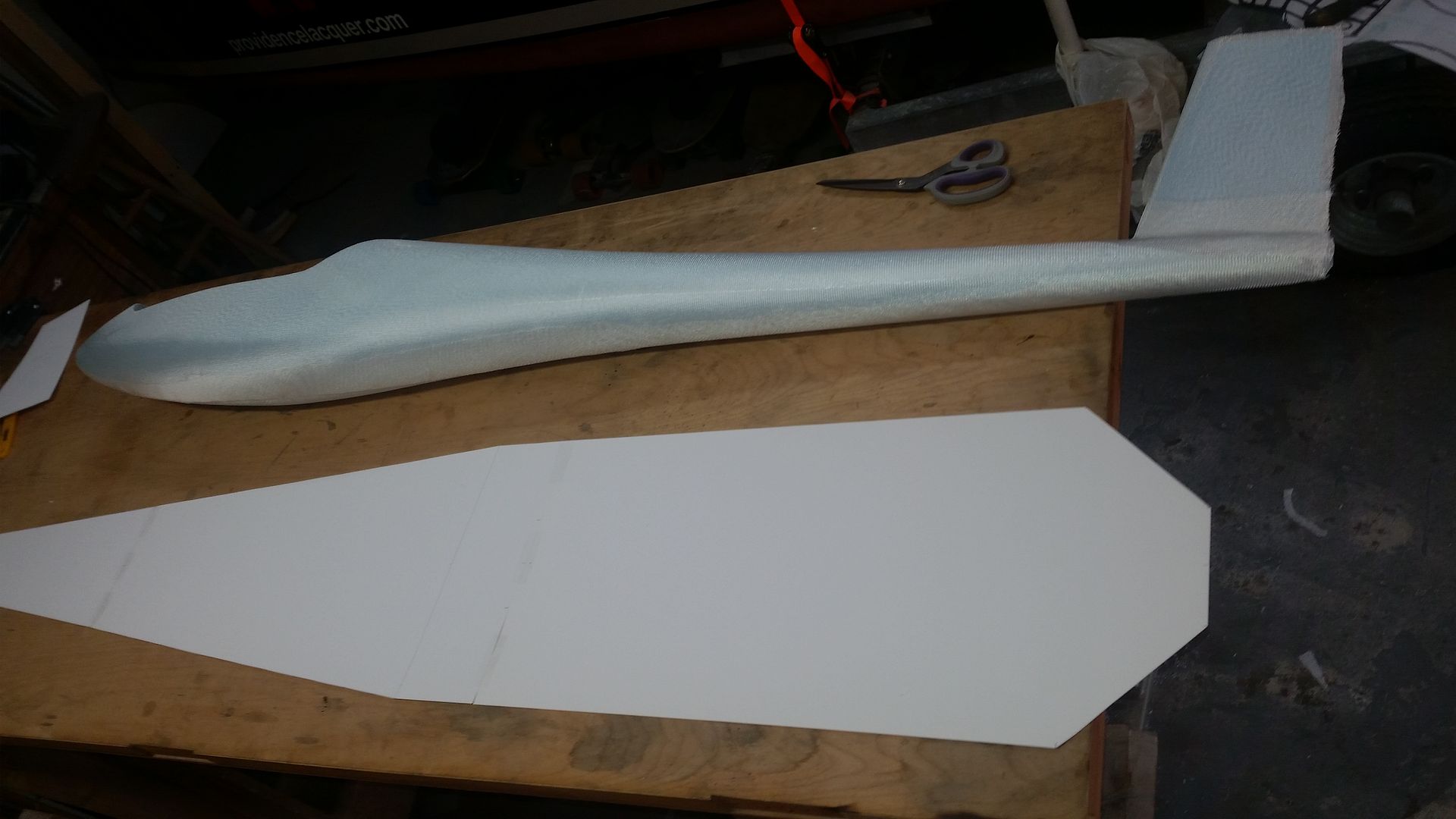
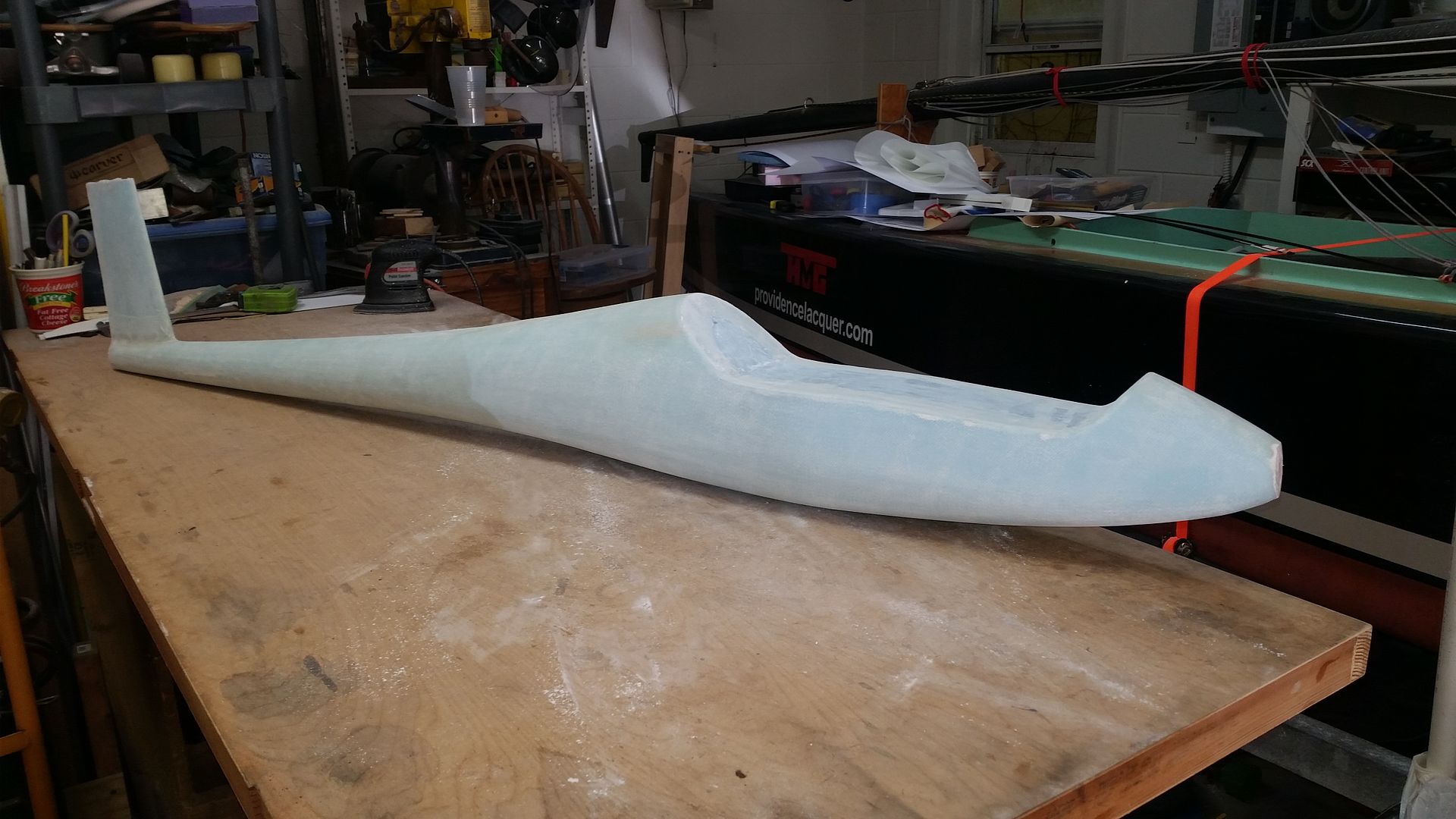

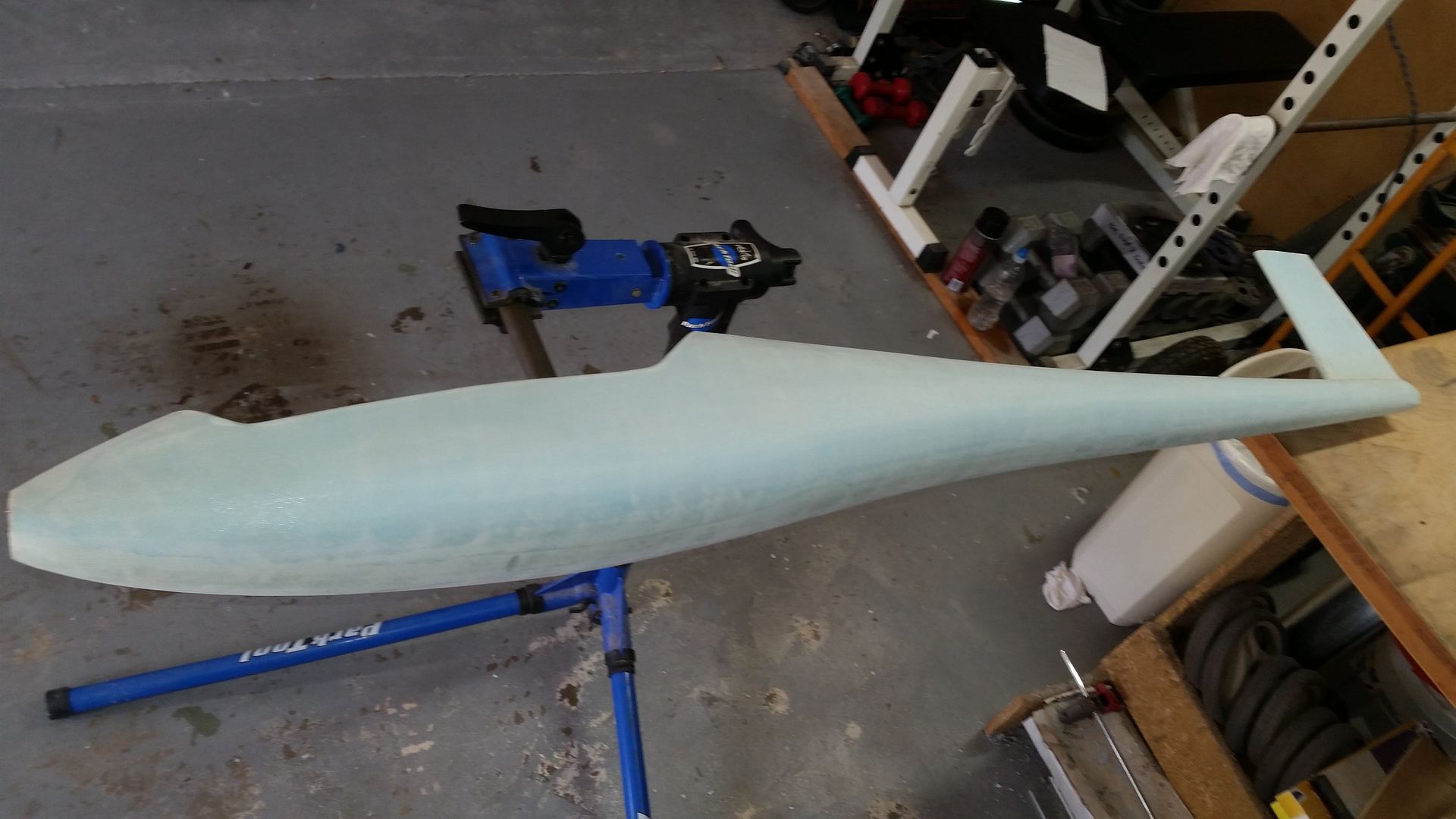
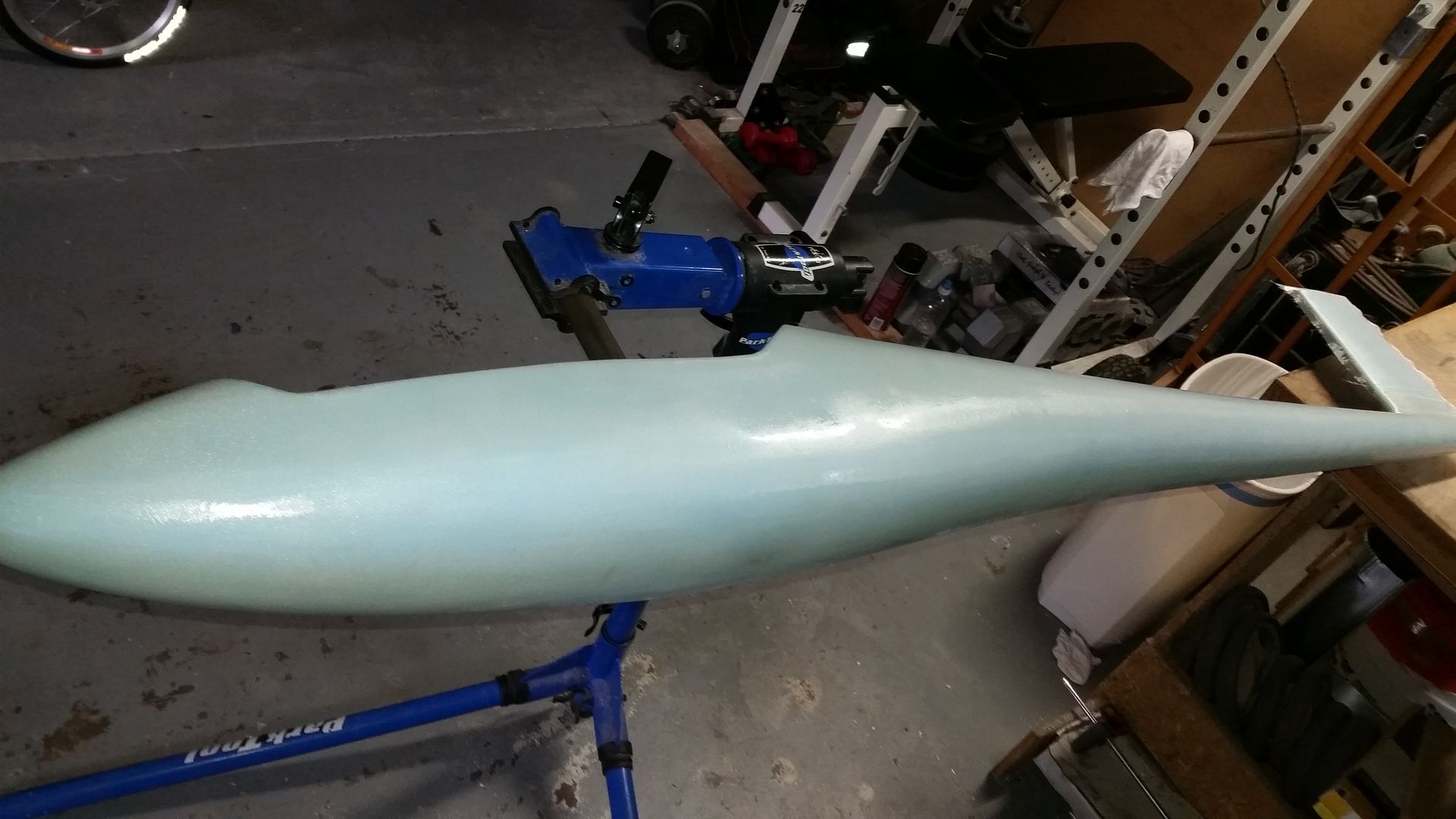
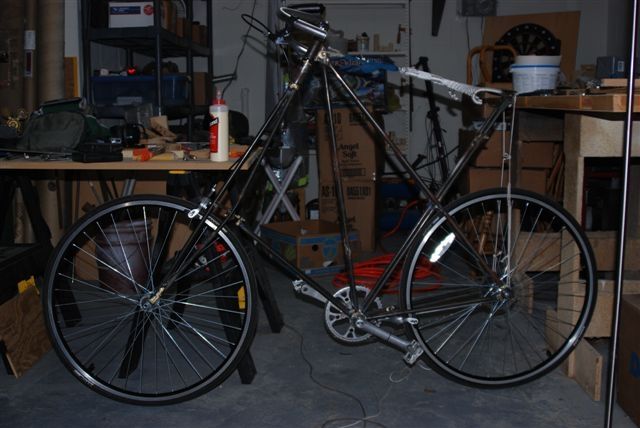

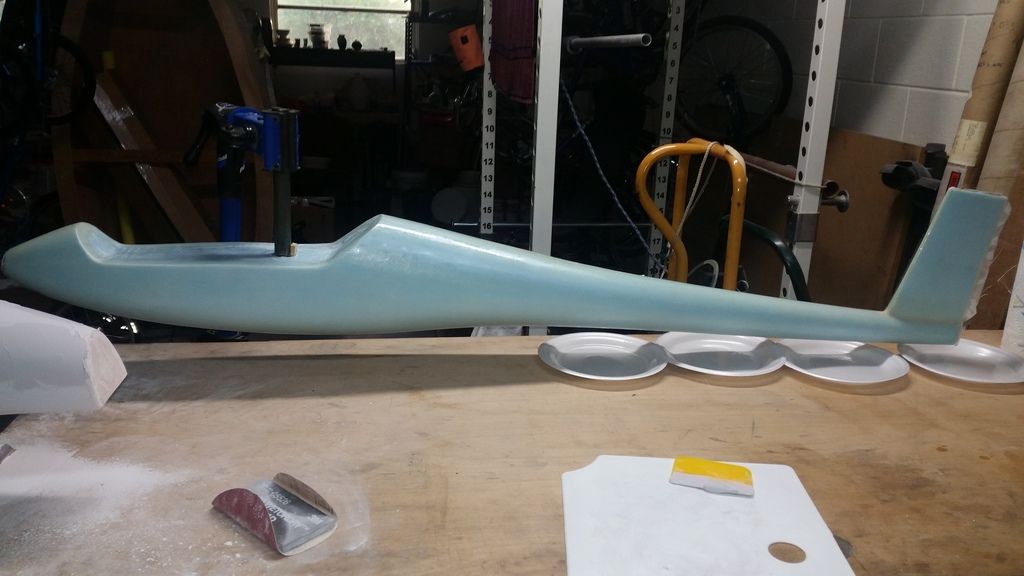
Comment